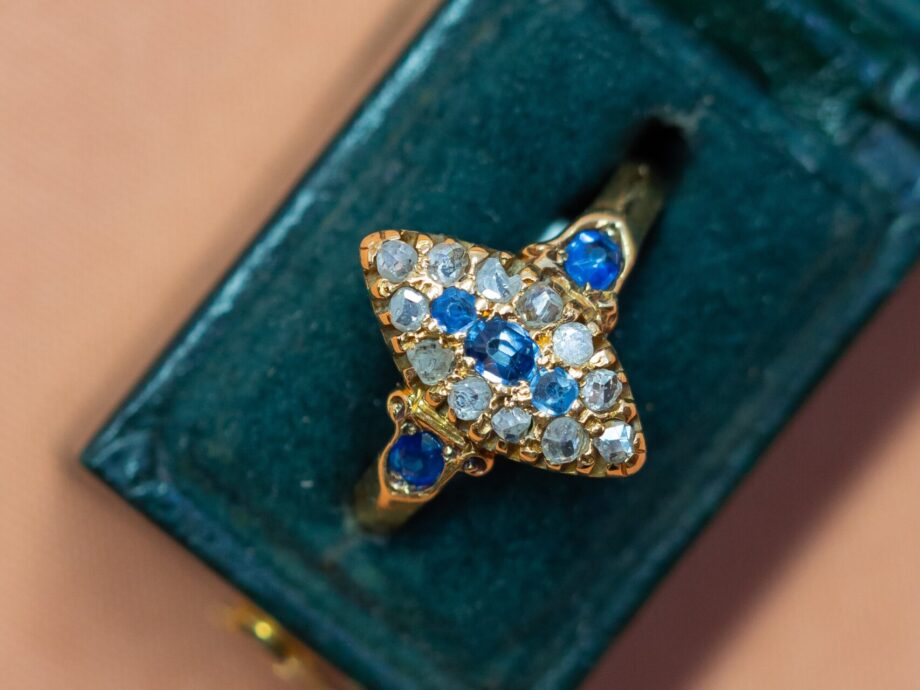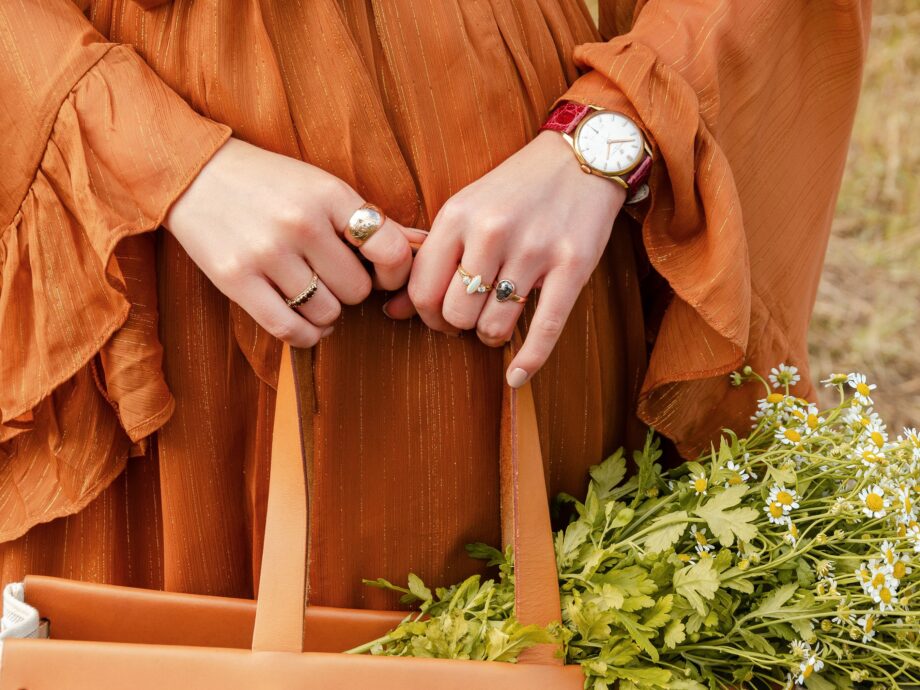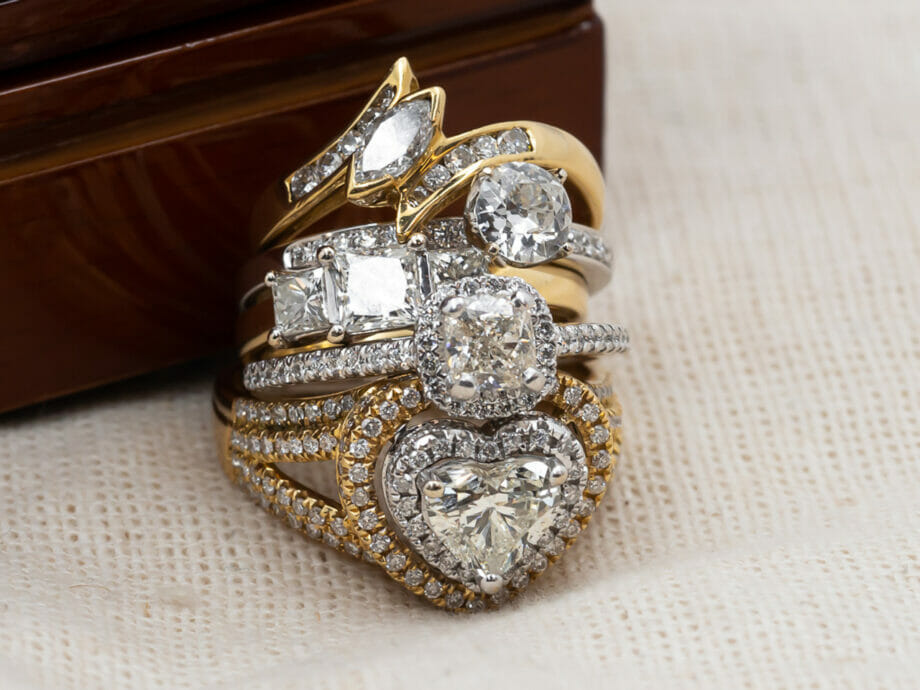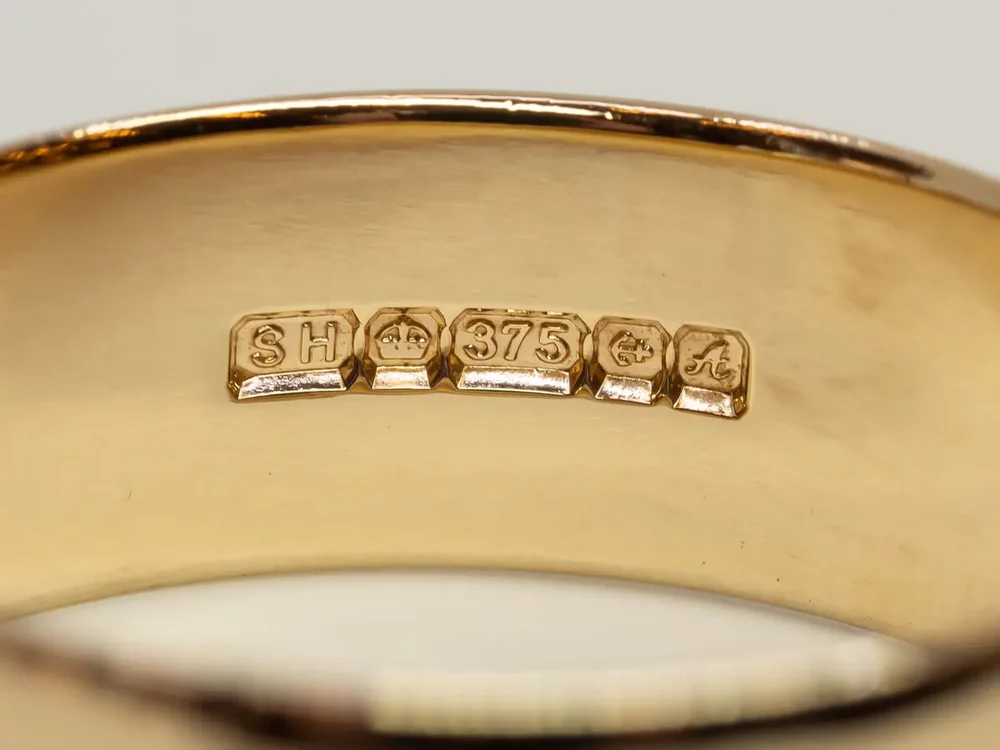
Here at Monty’s, hallmarks are the first thing that we look at when evaluating modern and vintage jewellery. Confirming whether a piece of jewellery is made from gold still requires a few different tests, but hallmarks indicate what the jewellery is most likely made from. Hallmarks are small markings that are stamped on a piece of jewellery to indicate the purity of the gold. So, if you were wondering, what does 375 mean? Or is my jewellery made from gold? Then read on to learn about gold jewellery hallmarks.
What Are Hallmarks?
Hallmarks are small markings that jewellers stamp into jewellery to indicate the purity of the gold. They come in a wide variety of forms with the most common being a series of numbers, however a combination of numbers and letters or even symbols are sometimes used. In the UK, hallmarks are called “Assay Marks” and these markings include different symbols that represent who made the piece, where it was produced and even which year. Outside of the UK these marks are less common, with most jewellery simply carrying a purity hallmark.
Table of Contents
What Does Purity Mean?
Gold jewellery is created from a mix of gold and other alloys, usually a combination of silver, copper, or nickel. The purity is the ratio of pure gold to those other alloys. For example, 9ct gold is made from 37.5% pure gold, with the other 62.5% made up of other alloys. 18ct gold is made from 75% pure gold and 24ct gold is 99.9% actual gold.
How Do I Read A Hallmark?
Hallmarks are usually so small they can be difficult to read, so we use a jeweller’s eye loupe with a 10x magnification to take a closer look. If you don’t have access to one, then zooming in with your phones camera is a great way to take work out what is stamped on your jewellery.
What About Maker’s Marks?
Some jewellery manufacture’s have their very own Maker’s Mark. Usually consisting of a few letters or a symbol, it shows who the original craftsman was, and is stamped alongside a purity hallmark. Maker’s marks are most commonly, but not exclusively found on English jewellery.
Common Gold Jewellery Hallmarks
| Gold Carat | Purity | Common Hallmarks |
|---|---|---|
| 9ct | 37.5% | 375, 9ct or 9k |
| 10ct | 41.5% | 415, 10ct or 10k |
| 14ct | 58.5% | 585, 14ct or 14k |
| 18ct | 75% | 750, 18ct or 18k |
| 21ct | 87.5% | 875, 21ct or 21k |
| 22ct | 91.6% | 916, 22ct or 22k |
| 23ct | 95.8% | 958, 23ct or 23k |
| 24ct | 99.9% | 999, 99.9, 24ct, 24k |
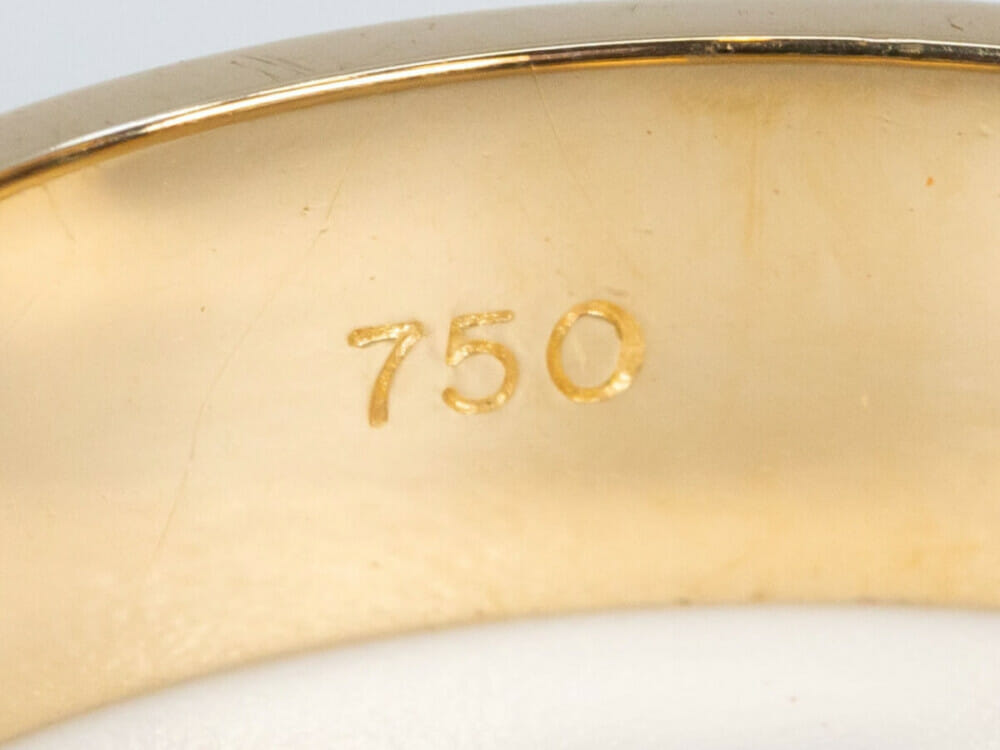
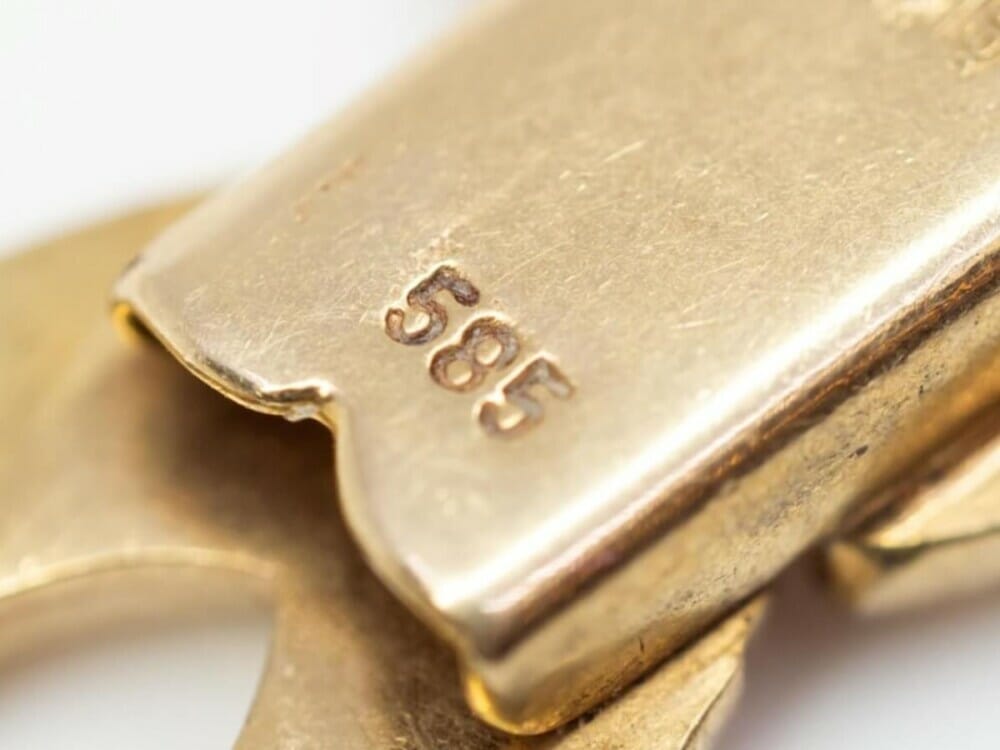
Other Common Hallmarks
| Metal | Purity | Common Hallmarks |
|---|---|---|
| Sterling Silver | 92.5% | 925, Sterling Silver, St Sil |
| Platinum | 85% | 850, PLAT |
| Platinum | 95% | 950, PLAT |
Why Mix Gold With Other Metals?
So you might be left wondering, why do jewellers mix gold with other metals when making jewellery? Well, there are two main reasons. The first is that pure gold is a very soft metal which can be bent and dented when worn daily. Mixing it with harder metals add durability and makes a piece of jeweller stronger. The second reason is that gold is a precious metal and has a high value. As a commodity its price has increased over centuries and doesn’t look like stopping. So by mixing in other metals we can create gold jewellery at a lower cost.
And that’s it! We hope you found this quick guide to Gold Jewellery Hallmarks helpful. Checkout our other guides for more jewellery knowledge.
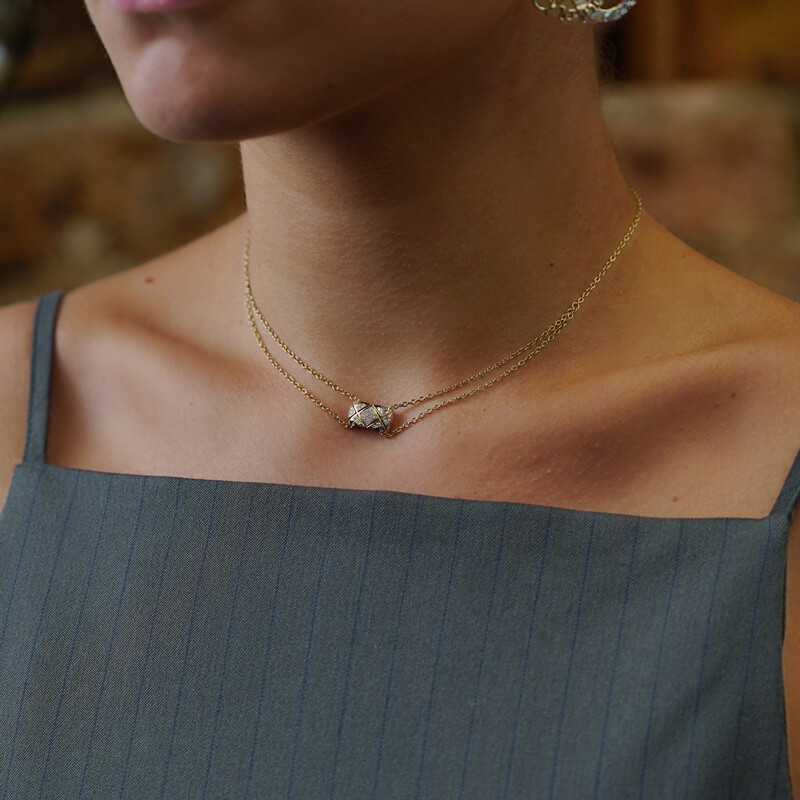
Fine Jewellery
Here at Monty’s we have a large collection of fine gold jewellery to choose from. Whether you are in the market for a solid gold necklace, a colourful gemstone ring or an heirloom worthy antique pendant.

